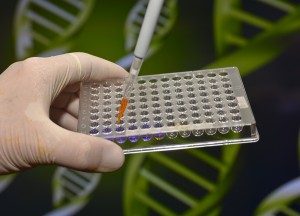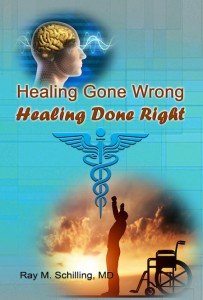A research report from Great Britain was recently reviewed by CNN; it revealed that commuting affects your health.
The longer we commute to work and back the more downtime we have where we do not move our muscles. But we also are exposed to more unhealthy snacks and sugary drinks that make us deposit more fat. The original research report was published here. What were the elements of this study?
Commuting affects your health, study design
Three consecutive annual waves of the British Household Panel Survey were utilized. These are longitudinal surveys of nationally representative households in Great Britain. The sample years were 2004/2005, 2005/2006 and 2006/2007. There were 15,791 participants in the study; of these 4,056 entered the study. The main mode of travel to work was determined at each time point. The self-reported height and weight was taken to calculate the body mass index (BMI) at baseline and at 2 years. Attention was paid to switches of transportation mode (that is from active to sedentary and vice versa).
Commuting affects your health, results of study
- Switching from car commute privately to active travel (walking, bicycling) or public transport resulted in a significant loss in BMI. There were even larger reductions of BMI’s in those who enrolled in the first year in active transportation, because of the longer exposure. Those with the longest journeys who used active transportation had significant weight losses.
- A group of 787 people switched from active travel or public transport to the use of their private cars as transportation. This resulted in a significant BMI increase.
- The study concluded that any interventions that would allow private car commuters to switch to an active mode of transportation could contribute to the population’s BMI being reduced significantly.
Commuting affects your health, Cambridge experiment
In a 2016 study from Cambridge (Great Britain) a similar experiment was done. They studied traffic patterns in the county of Cambridgeshire. The city compared 1143 adults working in the city with 1710 people who used the Cambridgeshire Guided Busway. The public had access to a new bus network that has connections with pedestrian pathways and cyclists since 2011. Longer commuting journeys incorporated walking and cycling, for which otherwise people used a private car and public commute. When officials explained the benefit of active travel to people, there was a 1.8-fold increase of active travel. There was also a 2-fold decrease of commuting solely by car. The weekly cycling commuting time had increased to 1.34-fold compared to the previous level.
Active commute most beneficial
People who at baseline were the vast majority in being inactive in their commute, were the ones who appreciated an active commute most. There was an association of active commuting, greater overall physical activity with an improvement of health and weight loss.
Commuting affects your health, US study
A multi-city study involved the largest 3,914 municipal jurisdictions, which were located in 473 of the most populous U.S. counties. This involved 48 states and the District of Columbia. In order to encourage more active commuting (walking, cycling) many municipalities developed pedestrian zones or pedestrian-friendly zones with adjacent bus transportation. A new concept of transit-oriented developments or districts (TODs) was adopted. TODs are higher density areas that are compact. They are mixed use areas, which you find around transit stops. This encourages walking. The study was completed in 2016. It showed that the TOD zones had higher occupancy rates. Many house owners had no car as they commuted using public transportation only.
Summary about transit-oriented developments or districts (TODs)
TOD zones were more populous, people in it had higher income, and they were more racially diverse and younger. The occupants of TOD zones had a 2.1-fold higher rate of using public transportation and they also had a 2.48-fold higher rate of using active transportation to work.
Commuting affects your health, general comments
The majority of commuters in England and Wales spent 56 minutes in their cars going to and from work in 2013. In London this daily commuting time is 79 minutes. The US data are similar.
With a well-developed public transportation system the authorities developed various programs designed to replace at least some part of the commute by active commuting. This is good for your metabolism, it is good for your cardiovascular status and it gets you away from snacking junk foods driving in your car.
Commuting leads to stress
A survey from London, England polled more than 1500 commuters. 55% reported increased stress levels, 33% reported increased snacking, 29% admitted to fast food consumption, 36% complained about sleeping problems, 41% said that they reduced physical activity and 44% reported that they had less quality time with their friends and family. 58% felt that flexible work hours would improve their health and wellbeing. Remember that how you are commuting affects your health.
My own experience watching commuting in various cities
Over the years I have traveled extensively in Germany, Austria and the US. In Europe it is interesting how many years ago the pedestrian zones in the old town centers have reshaped the commuting. The U-Bahn (subway) and commuter trains have intermingling networks that shoot you out to pedestrian zones. There is no escaping from it, you have to walk before you can catch a connecting bus or tram.
Vienna (Austria)
Vienna (Austria) for instance allows you to get out at the U-Bahn station of Stephansplatz, which is a pedestrian zone around the Stephan’s Church (Stephanskirche). There is an amazing array of shops and in a side alley you can even find a Starbucks, if this is what you are looking for. When you walked enough, you hop onto any of the U-Bahn connections. This brings you where you need to be. If you are too far from your goal, hop onto a tram and enjoy the sightseeing. There are also buses that can get you there. It is all covered under the same Vienna card, which I appreciated as a visitor. It is best to park your car in the periphery and use the commuting network to get you to where you want to go.
Munich (Germany)
Munich (Germany) has a lot of cycle paths, which run parallel to the pedestrian paths. I was interesting to see business people in black suits cycle to work. Otherwise there are the U-Bahn, S-Bahn, trams and buses that all interconnect.
Münster (North Rhine-Westphalia, Germany)
Münster (North Rhine-Westphalia, Germany) has an extensive network of cycle paths and pedestrian walks. Buses and trams are also constantly running. The old historic town is a pedestrian zone, but anybody can commute to anywhere between walking or using the bus/tram. I found it astonishing this spring when I visited; there were hundreds of people, young and old cycling to and from work. The employers are providing huge metal racks where people can attach their bikes to with a lock.
Berlin
Berlin is another multi level commuting city in Germany. You can use the U-Bahn, S-Bahn (commuter train), bus or tram to get to work. Here is an informative video that explains. I did not see many cyclists there. But hundreds of people are walking. Yes, there are many pedestrian zones and they interconnect with all of the commuter options. Berlin spreads over a vast area, so the S-Bahn, which is a local commuter train is particularly important. For the shorter connecting trips people commute by the U-Bahn (subway). Buses and trams plus walking do the fine-tuning to get to your destination.
Vancouver (BC, Canada)
Vancouver (BC, Canada) has some cycle pathways in the West end, close to Stanley Park. Otherwise there is a network of buses, the Skytrain, Sea Bus (between North Vancouver and downtown) and the West Coast Express (a commuter train). For the size of the city I think that Vancouver could benefit from studying some of the transportation modalities in Europe to entice the car travelers to use public transportation. When I travel to Vancouver, I use my own car, as it is so much faster to reach any goal. Public transportation is at this point not effectively connecting all the areas in this city.
Conclusion
In the past we often heard that there was nothing that could be done about traffic jams and commuter stress. Think again. Revitalization of city cores all over Europe, Great Britain and in the US has taken the TOD concept to heart and active commuting has become a reality. Whenever you can, use alternatives like cycling, walking and public transit to get to and from work. Studies have even shown that when you become an active commuter you likely will also become more active after work. Even using public transit makes the commute more active, as you are not sitting for an hour or more in your vehicle.
Use public transit, not your own car to commute
You have to get out and walk in order to catch a connection. This all helps to keep you physically more fit than the commuting style, where you sit in a vehicle and possibly dip into junk food. It is not only about body mass index reduction and decreasing your waistline. Active commuting is also a lot less stressful than the passive modality, where traffic jams add to frustration and stress at the beginning and at the end of a workday.















